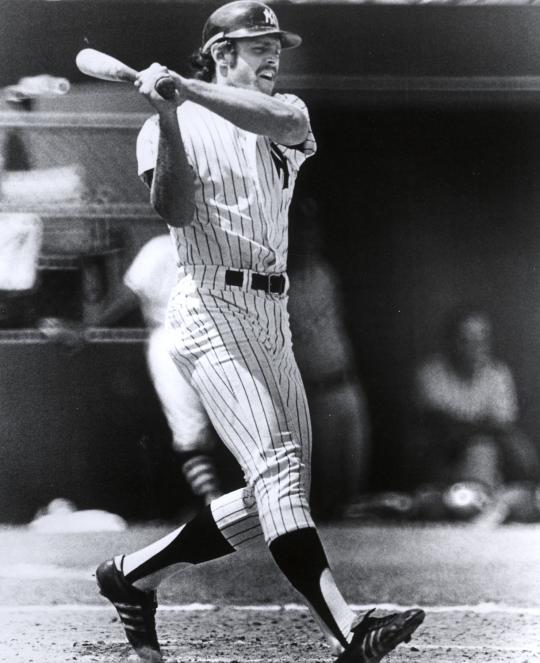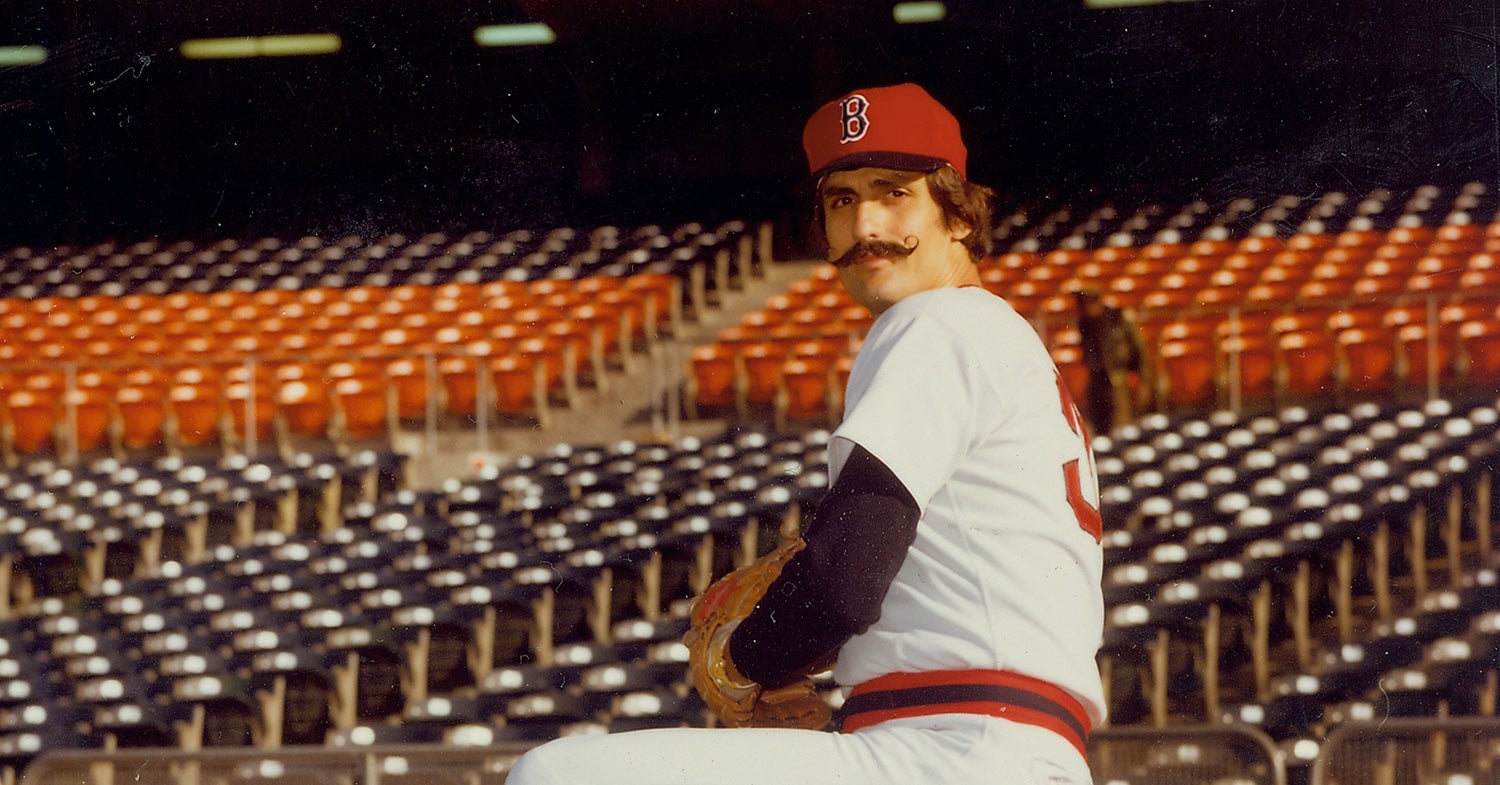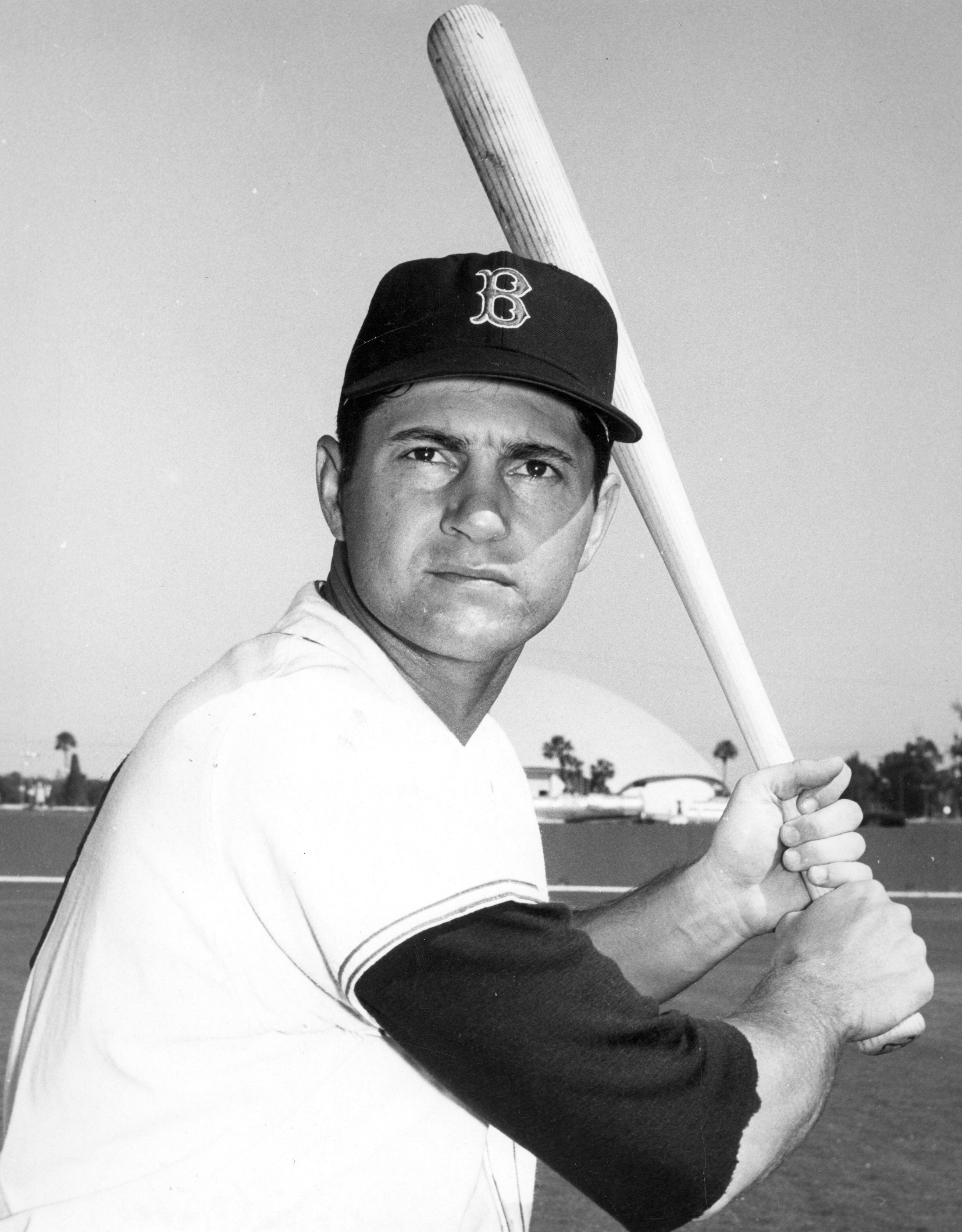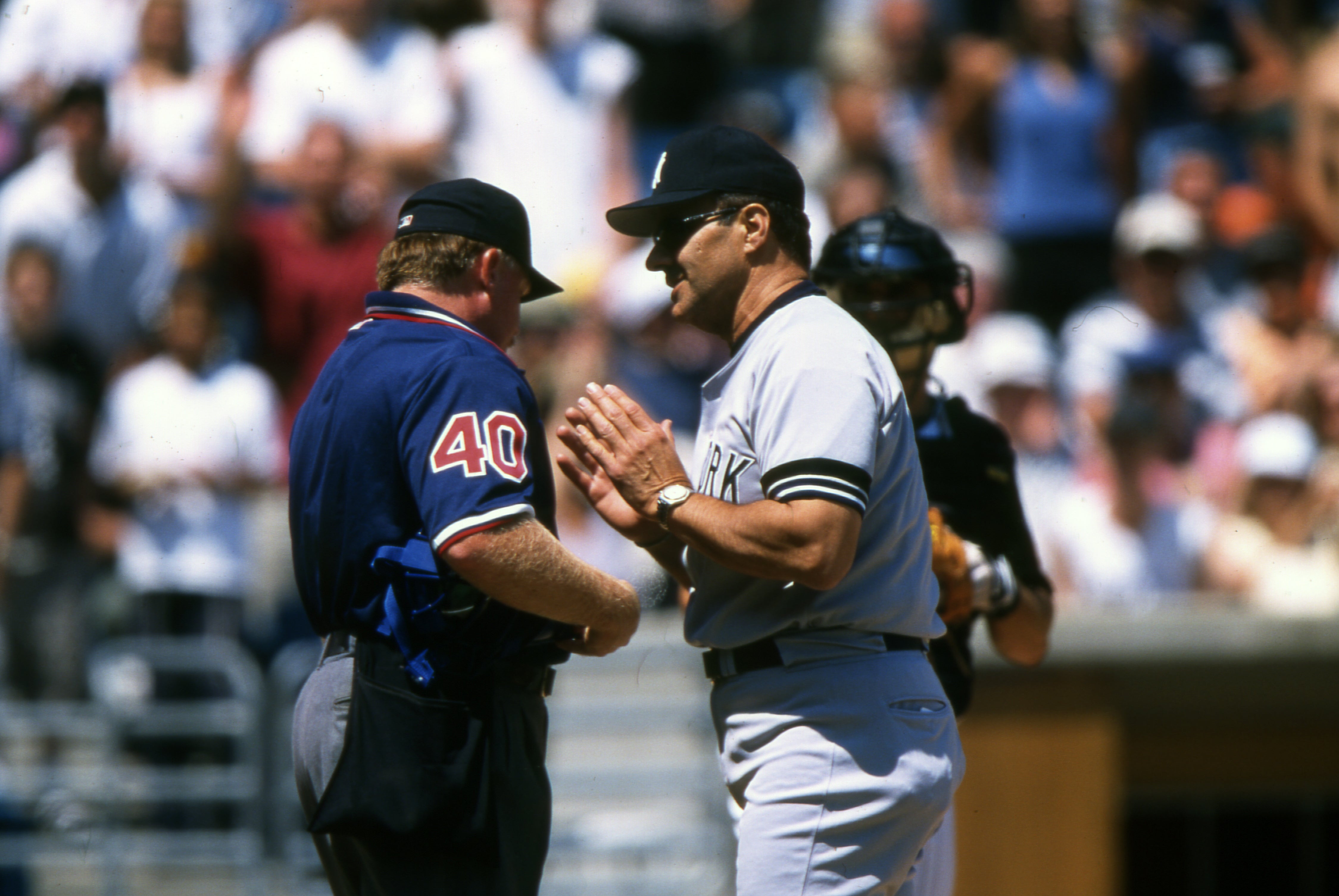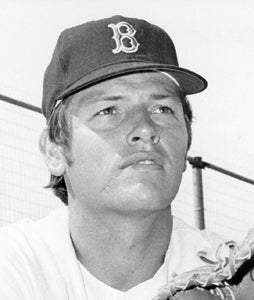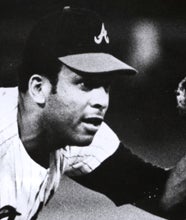- Home
- Our Stories
- #Shortstops: Opening Day Batman
#Shortstops: Opening Day Batman
Two members of the Hall of Fame Class of 2019, Edgar Martinez and Harold Baines, spent the majority of their highly successful careers serving as their team’s designated hitters. But the position didn’t exist until Ron Blomberg stepped to the plate on Opening Day almost five decades ago.
In a sense, Blomberg (pronounced BLOOM-berg) was “designated for assignment” on April 6, 1973. That was the day he made history when his New York Yankees visited the Boston Red Sox for the season opener and he became the first DH used in a regular season game. Afterward, he donated his prized bat to the National Baseball Hall of Fame and Museum.
The history of the designated hitter begins on Jan. 11, 1973 – just three months before the start of the season – when, at a joint meeting of big league owners, all 24 approved the use of the DH in the American League starting that season in a three-year experiment to improve Junior Circuit’s anemic offense and attendance.
“If baseball were utopia,” editorialized the Sporting News, “every player would be able to do everything but, in fact, 99 percent of the major league pitchers are pathetic figures at bat, automatic outs.”
While Cincinnati continued a longtime tradition by hosting the 1973 season’s first game on Thursday, April 5, the AL campaign began on April 6 with four contests. Blomberg became the first DH because the early afternoon game at Fenway Park happened to be the earliest AL opener, starting 40 minutes before the other AL afternoon game, Milwaukee at Baltimore.
Blomberg, who had played first base for New York in 1972, hitting .268 with 14 homers and 49 RBI, made DH history when, batting sixth in manager Yankee manager Ralph Houk’s lineup, he came to bat in the top of the first inning with the bases loaded and two outs. Stepping up to the plate at 1:53 p.m. EST, in front of a sellout crowd of 32,882, he faced Boston starter Luis Tiant and walked on five pitches, driving in the game’s first run.
The Yankees would go on to lose the season opener, 15-5, with Hall of Fame Class of 2000 member Carlton Fisk, the reigning AL Rookie of the Year, socking two homers, including a grand slam, and driving in six runs to lead Boston. Blomberg, the former No. 1 overall pick in the 1967 MLB Draft, finished the afternoon batting 1-for-3 with a third-inning infield single off Tiant. Boston’s DH, future Hall of Famer Orlando Cepeda, was the only Red Sox player to go hitless.
Newspapers across the country the next day trumpeted the fact the 24-year-old lefty-swinging Blomberg had made baseball history the previous day. One called it “the most revolutionary change in recent baseball history.”
“They say that the designated hitter will cut down on strategy, but I don’t agree,” said Houk in the April 10, 1973 issue of The New York Times. “We’ll have fewer bad innings, but I think there will be more strategy. I doubt that we’ll see any pitchers hitting for themselves, however. I’ll grant you that there are good hitting pitchers like Catfish Hunter in our league and Bob Gibson in the other, but even the best hitting pitchers can’t deliver in the clutch like the ones we will be designating.”
But the Boston Globe’s Harold Kaese, who would become the 1976 J.G. Taylor Spink Award winner, was not impressed, writing: “Before the season is over, the DH (deodorant hilarious) is going to become as tiresome a headline as Watergate. One feature of its introduction at Fenway Park was that in losing 15-5, the Yankees did not use a pinch-hitter. There was no pitcher for Ralph Houk to pinch-hit for. Before the DH he might have used three.”
The other AL team’s first designated hitters used on Opening Day included Ollie Brown (Brewers), Terry Crowley (Orioles), Ed Kirkpatrick (Royals), Tom McCraw (Angels), Tony Oliva (Twins), Bill North (A’s), Gates Brown (Tigers), John Ellis (Indians), Mike Andrews (White Sox) and Rico Carty (Rangers). Cepeda, who would go on to bat .289 with 20 homers and 86 RBI, won 1973’s Outstanding DH Award.
A total of 132 DHs were used by the 12 AL teams in 1973, ranging from seven by Cleveland to 19 by Oakland. While the AL had a .239 cumulative batting average in 1972, it improved to .259 in ’73 (DHs combining to hit .259 overall).
Back in 2010, Blomberg visited the Hall of Fame and was reunited with an old friend he joked might have had 50 more hits left in it.
“People don’t realize when we played, they gave us two dozen bats right before the season,” Blomberg said. “And that was a bat that I knew was going to have a lot of hits in it. But it’s great to give back to the game of baseball.”
According to Blomberg, he didn’t know what to expect when approached by the Yankees before the game about serving as the DH.
“It was a very unusual day because in 1972 I was coming off a pretty good year, and then in 1973 I pulled a hamstring down in Spring Training,” Blomberg said. “Our manager, Ralph Houk, and coaches Dick Howser and Elston Howard, asked me on the flight from Fort Lauderdale up to Boston if instead of going out on the field could I, because of the pulled hamstring, be the DH. I said, ‘What is it?’ I thought it was a glorified pinch hitter to be honest with you. They said just go up to bat four or five times, try and knock in a few runs.
“Unfortunately we lost 15-5 but I got to be the first designated hitter.”
Though injuries to his knees and shoulders ravaged what could have been a very successful career in the major leagues, Blomberg looks back with no regrets.
“I got lucky. One AB (at bat) got me into the Hall, one AB got me into every newspaper and magazine in the country,” Blomberg said. “The funny part about it is people still remember. Fifty percent of the people love it, but 50 percent of the people hate it. It’s really been a fun ride, I really enjoy it.
“I got in the Hall of Fame the back door rather than the front door.”
The bat Blomberg donated as the game’s first DH – and currently on display at the Hall of Fame’s Whole New Ballgame exhibit – is a 36-inch, 35-ounce Louisville Slugger. The knob end has a hand drawn five-point star drawn in black marker.
“Ron Blomberg, upon receiving a new shipment of bats, promptly had a five-point star painted on the bottom of each knob for quick identification in the bat rack,” it explained in a June 1975 issue of the Sporting News. “Somebody asked, ‘Why not a six-point star?’ He said, ‘I still have to earn that. When I’m a real headliner, I’ll make it six points.”
In 1993, Blomberg told the Sporting News: “After the game, I had what seemed like 100 reporters asking me about the experience as the game’s first designated hitter. Then our P.R. guy, Marty Appel, came to my locker and took my bat. I said, ‘Marty, what the heck are you doing?’ He said that (Hall of Fame Director) Ken Smith called and wanted it for an exhibit.”
Blomberg, who was forced to retire in 1978 at the age of 30 because of injuries, had hoped his bat would one day land at the Hall of Fame with a bronze plaque. Instead, his bat made it instead of him.
“When you’re young, you always dream of making it to Cooperstown,” Blomberg told the Sporting News in 1997. “Well, even though I made it through the backdoor, I couldn’t be prouder. The great thing about being the first to do something is that nobody can ever take it away from you. That’s kind of nice.”
Bill Francis is the senior research and writing specialist at the National Baseball Hall of Fame and Museum

